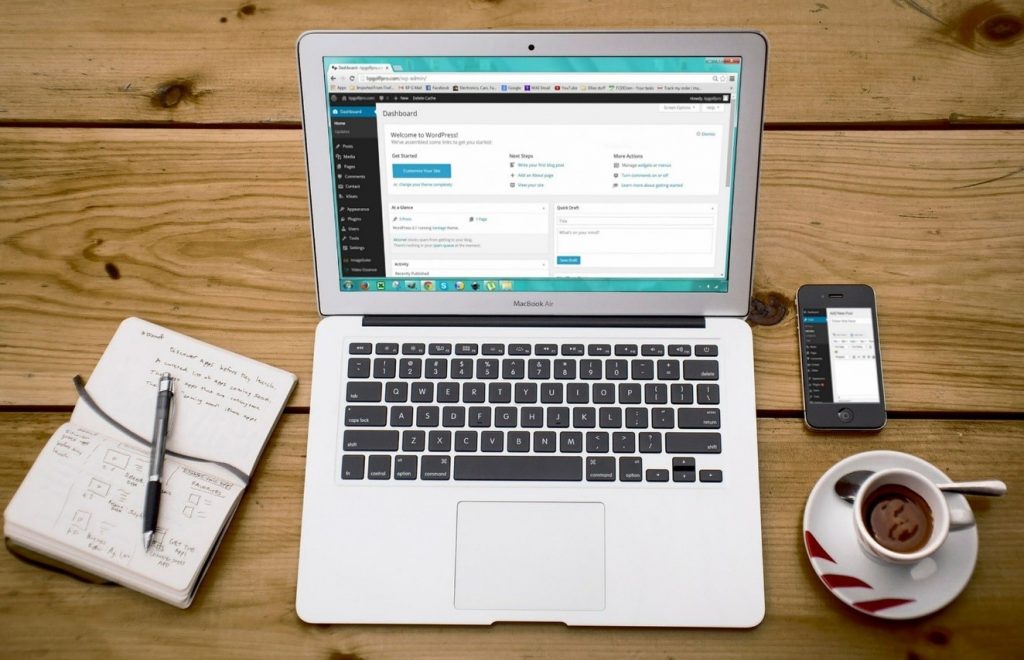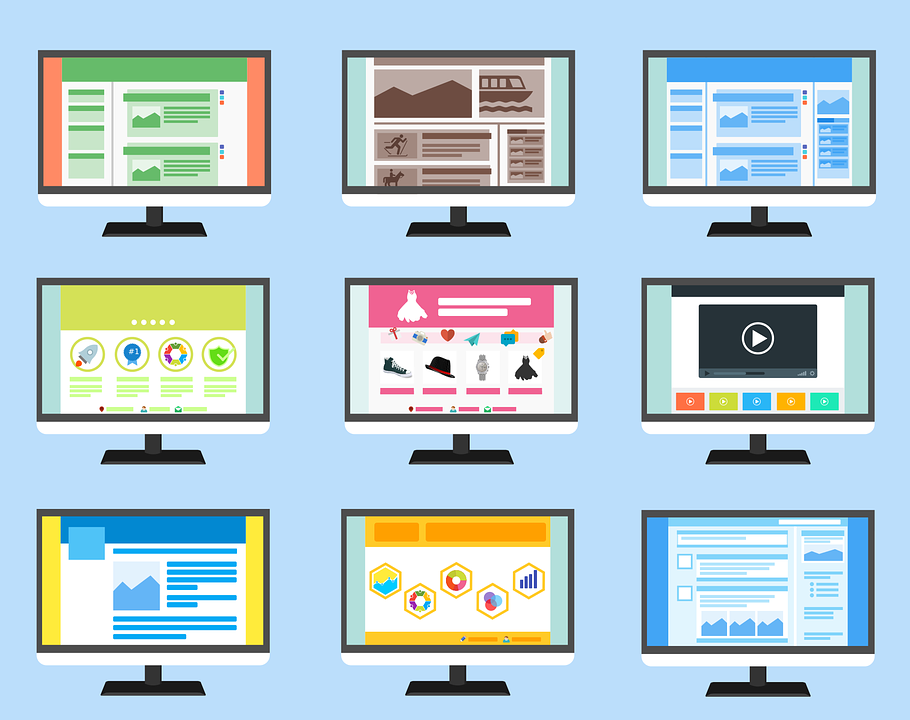Is designing your own website better than hiring a pro? We look into all the pros and cons of both DIY and Pro design.
Back in the early years of the internet, if you wanted a website, you needed to recruit the pros to help you design one. However, as the internet has evolved, so has the way we develop and design websites. In recent years, companies like Wix and WordPress allow you to create a professional website, with custom URLs, for a mere fraction of a price that a web design agency would charge. They’ll even host your website for you on their secure servers. With a full range of custom templates, interchangeable colors and plug-ins available, is this the end of pro web design? Web design in Essex and London, and many other parts of the UK is still a lucrative business, but with more and more smaller businesses choosing to use custom website designs, we want to know are these sites actually any better than pro designs.
We’ve teamed up with web designers in Essex, Revive Digital, to find out what really is better for a business – Pro or DIY. Whilst you may think a web design company wouldn’t be impartial, that’s what we’re here for. We’ll outline the benefits of both and weigh up the cost-effectiveness for each side. You’ll have all the information you need to make an informed decision about the future of your website. So, let’s get ready to rumble! In the blue corner, we have professional web design agencies. And in the red, it’s custom built, DIY websites. The ultimate battle. It’s Pro Design vs. DIY Design…
Table of Contents
An Investment
Before diving into the battle, we want to look at why these various customizable websites have taken over. 15 or so years ago, having a website was a luxury only the big businesses could afford. But over the years, the shift towards digital has seen every kind of business popping up with a website. If you haven’t got a website, some may find your business untrustworthy, so for even the smallest of businesses, being online is essential.
One of the big things that put off people from using a professional web design company is usually the cost. It’s no small expense and is a serious investment for even the largest of companies. It needs to be planned and thought over meticulously before decided.
But, for both large and small businesses, there is another investment to take into account, for both options. This is the investment of time. For a pro web designer, there’s the wait whilst they complete the designs and approval stages. As for the DIY sites, there is the time it takes to build a site with everything in place. Either way, you’ll be investing time. But, a pro website means that you won’t have to do any of the heavy work. So, your investment of time is only waiting.
Information
Before we get into the good, the bad and the ugly of each option. We thought it only fair to present you with all the information behind each option. We’ll talk about exactly what the process is for a pro web designer, and for building a custom website too. You can find out what’s involved in each process below.

Professional Design
When it comes to creating a beautiful bespoke website, a web designer has a lot of work to do. Whilst custom built websites have some easy drag, drop, and design features, web designers have to put in all the legwork themselves. First of all, there’s the planning. Designing a website that’s both on brand and looks good. It needs to be on trend, and easy to navigate. For this, a web designer gets to know your business, inside and out. What your needs are and what kind of site they are building. If you’re an influencer blogger, you’ll need a blog-based website. But, if you’re an online florist, it’s an e-commerce site. See, it’s about making a site that works for your business and your customers. This will involve setting out what work needs to be done, whether the site can be built off an existing system or if it needs to be entirely new.
Before any of the design work begins, pro designers will probably set the limitations of the project. To outline what work needs to be done, how long it will take and therefore how much it will cost too. This stage helps to outline if your project is possible and if anything needs to be changed or adapted. They’ll outline a site map, to make sure that your site’s pages all link together in a comprehensible way. Next, it’s time to see some design mock-ups. Web design agencies will make sure you sign off everything at each stage, so there are no miscommunications about designs. Your designs will be formatted and built into a basic site, so it can be reviewed. And then, the web developers work their magic. All the functionality behind a site is worked on by developers in order to build a site that works. The HTML, CSS, and CMS are some examples of the work that goes into bespoke web development and design. If you’ve requested an e-commerce site, all the things like a shopping cart and checkout systems will be built in at this stage.
Finally, your website is tested on a private link, to make sure that it’s functional and works well. Whether it’s been built on an existing system of from the ground-up, it’s got to work with the design that’s been put in place. Plus, to see if its compatible with all browsers (Chrome, Safari, Firefox etc.) and other devices such as tablet and mobile. Once approved, your site will be launched and is ready for use. However, the work won’t stop there. See, most agencies will include a hosting fee, that you pay (as standard) so your website can work. Some agencies will include maintenance work in their prices, so your site stays up to scratch. A website can’t be left to its own devices, it needs work to make sure it stays functional.

DIY Design
Now, it’s time to talk about DIY design. The only way to build a website without any prior knowledge and from the comfort of your own home. Many sites like WordPress and Wix, offer professional website design at affordable prices. We’ll look into how the process actually works for custom built sites. Whilst some of the stages are similar to this, it’s a lot less technical. One the most basic of plans, you can create a site for free. But when you want to look into a custom domain name or installing plug-ins, your site needs a little more investment than the ‘free’ package can offer. So, as for the planning stage, you’ll be doing the same as a web design company would, but on your own. That means competitor research, brand planning, and market research – everything a web design company offer as part of their package. Usually, there’d be around 4-5 people working on your site. Using specialist analytical tools to get all the information they need on competitors and the target market for your site. But, you can do it alone, without all the tools. You’ll just have to use your wits instead.
Now, you’ll have to pick your own design, which is fairly easy. See, combining your research with the branding of your site should advise you on the kind of template to pick. Luckily, all the templates are fully customizable, so you can input images and customize colors and fonts too. Finally, you can add more features like background videos, scrolling functions and a lot more, to give your site a unique look and feel. This can take hours on end, so try not to get lost in the moment and tweak your design for days and days. Remember, you can always return to it later on – most of these sites are fully customizable. Always design with your user in mind, make their navigation easy and all your content readable.
The next stage is a little trickier, as it’s where technical aspects come into play. You’ll need a basic understanding of SEO and how content and sites are crawled by search engine robots. If we’re slowly losing you, then do a little research… You’ll need to do some basic keywords research and optimize all your text for search engines. The background of your site, the stuff that users won’t see, is the Meta Tags and Alt text too. This is text and data that search engine robots see and allows them to collect data about your site, to return to a user’s relevant search query. And finally, the links. Make sure there are clear links in your text around your site, to help robots navigate them with ease – plus links to your social profiles too. You’ll need to add in plug-ins and other tools to make your site professional and easy for visitors to understand. Also, you’ll need to make sure your site works on mobile too. Most have compatibility built in, so your site works on most platforms. Then your site is ready to go!

Pros and Cons
Pros of DIY – To start, they’re a lot cheaper. If you’ve got a smaller budget available for your site, customizable DIY sites are great for making a professional looking and fairly functional site. These sites are becoming more and more powerful, so they are nothing to be sniffed at. Just make sure you customize your URL for a professional look.
Pros of Pro – You’ll be getting the industry standard work, with all the knowledge to back it up too. Most design agencies have had years of experience, so can build a great site. They’ll be able to work on e-commerce sites which are a lot harder to build on your own. You’ll also be able to contact them with any issues or problems, and you’ll know who you’re dealing with. They’ll have all the tools ready to analyze and optimize your site too.
Cons of DIY – Whilst you can customize, the themes available are not as unique as having a bespoke design. Plus, if you’re a small business owner, your most valuable asset is your time. You’ll be putting in hours and hours of work into this site. If your business expands, and you move to a different web hosting company, these sites are difficult to export. The more functions you want for your site, the more you’ll have to pay. Plug-ins and extras cost some serious £ (you may not be saving a lot after all).
Cons of Pro – The big kick is the cost. Professional websites just cost more in general. And the amount of work required for your site can push the price up. Also, you won’t have full customizable control. Adding in texts or images will be left down to the web design agency (which again, may cost).
So, it looks like a draw! Both sites have their advantages and disadvantages, but it depends on your circumstances as to which service you use. If your focus is on creating a simple website, for a fair price – DIY is for you. Bloggers or photographers can use these sites to easily create online portfolios. However, if you’re in the business game and SEO is the aim – Pro is the way to go. You’ll be able to have all the research carried out for you as well as building in functional plug-ins, set at the price of the website. E-commerce and technical sites are more challenging to create on the DIY platforms. But it largely depends on your budget and the time you have to spare. The nature of your business factors into it as well.
About The Author:
Hugh Sallows is a Content Marketing Executive, at Revive.Digital. Writing content for magazines, blogs, and websites, Hugh has an extensive history of writing.

![Professional vs. DIY Web Design [Which one is better?]](https://www.technicalmindsweb.com/wp-content/uploads/2018/02/Professional-vs.-DIY-Web-Design-1080x675.png)